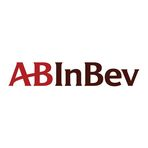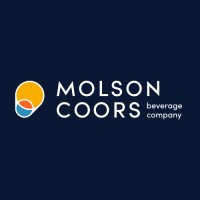Tariffs and Trends: The Future of Alcohol in a Shifting Market
February 3, 2025, 11:05 pm

Location: Belgium, Flemish Brabant, Leuven
Employees: 10001+
Founded date: 1977
Total raised: $5B

Location: United States, Illinois, Chicago
Employees: 10001+
Founded date: 1786
The landscape of the alcohol industry is changing. Tariffs loom large, and consumer preferences are shifting. The recent imposition of tariffs by the U.S. government on imports from Mexico, Canada, and China has sent ripples through the beverage sector. Major players like Diageo, Constellation Brands, and Anheuser-Busch InBev are bracing for impact. The stakes are high, and the implications are profound.
Tariffs are like a storm on the horizon. They threaten to disrupt the delicate balance of trade. President Trump’s recent executive orders impose a 25% tariff on Mexican and most Canadian imports, and a 10% tariff on goods from China. This move could shake the foundations of the alcohol market. Companies that rely heavily on imports are particularly vulnerable.
Diageo, the British beverage giant, stands at the forefront. With nearly half of its business tied to imports from Mexico and Canada, the company is in a precarious position. Its brands, including Johnnie Walker and Smirnoff, could see price increases that deter consumers. The company’s recent $500 million investment in Mexican tequila production now feels like a double-edged sword. While it expands capacity, it also exposes Diageo to tariff risks.
Constellation Brands, known for Corona and Modelo, faces a similar fate. With 85% of its sales derived from Mexican beer, the potential for a mid-20% hit to earnings per share looms large. This is not just a financial issue; it’s a matter of brand loyalty. Consumers may turn to domestic alternatives if prices rise too steeply. The company’s production capacity is set to increase, but will it be enough to offset the financial blow?
Anheuser-Busch InBev, the behemoth behind Budweiser and Stella Artois, may find a silver lining. Much of its portfolio is sourced domestically, which could shield it from some tariff impacts. However, a significant portion of its earnings comes from Mexico. If demand weakens due to higher prices, the company could face a storm of its own.
Brown-Forman, the maker of Jack Daniel's, is also in the crosshairs. With exposure to tequila production in Mexico, the company risks losing ground. Retaliatory tariffs from Canada and Mexico could further complicate matters. The whiskey market is already competitive, and any increase in costs could push consumers toward cheaper alternatives.
The alcohol industry is not just grappling with tariffs. It’s also navigating a cultural shift. Younger consumers are drinking less. They are more health-conscious and seeking alternatives. This trend is reshaping product portfolios. Companies are scrambling to adapt. Nonalcoholic cocktails and energy drinks are emerging as new categories.
The rise of GLP-1 medications is influencing consumer choices. People are increasingly looking for better-for-you options. This shift is forcing established brands to rethink their strategies. The days of sugary, high-calorie drinks may be numbered. Companies that fail to innovate risk being left behind.
The food and beverage sector is in a state of flux. The rapid adoption of AI technology is changing the game. Manufacturers are leveraging AI to streamline supply chains and accelerate product development. This technological revolution is not just a trend; it’s a necessity. Companies that embrace innovation will thrive. Those that cling to outdated practices may find themselves struggling to survive.
Mergers and acquisitions are also reshaping the landscape. Major players are seeking new revenue streams. The recent $36 billion acquisition of Kellanova by Mars highlights this trend. Companies are willing to invest heavily to secure their future. The competition is fierce, and only the most agile will succeed.
As the alcohol industry faces these challenges, it must also contend with changing consumer preferences. The demand for healthier options is rising. Brands that can pivot quickly will capture market share. Those that resist change may find themselves in a precarious position.
The future of the alcohol industry is uncertain. Tariffs, shifting consumer preferences, and technological advancements are all at play. Companies must navigate this complex landscape with agility and foresight. The storm of tariffs may be brewing, but it’s the winds of change in consumer behavior that could prove even more disruptive.
In conclusion, the alcohol industry stands at a crossroads. Tariffs threaten to disrupt trade, while changing consumer preferences demand innovation. Companies must adapt or risk being swept away. The landscape is shifting, and only those who embrace change will thrive in this new era. The future is not just about surviving; it’s about thriving in a world that is constantly evolving. The alcohol industry must rise to the challenge. The clock is ticking.
Tariffs are like a storm on the horizon. They threaten to disrupt the delicate balance of trade. President Trump’s recent executive orders impose a 25% tariff on Mexican and most Canadian imports, and a 10% tariff on goods from China. This move could shake the foundations of the alcohol market. Companies that rely heavily on imports are particularly vulnerable.
Diageo, the British beverage giant, stands at the forefront. With nearly half of its business tied to imports from Mexico and Canada, the company is in a precarious position. Its brands, including Johnnie Walker and Smirnoff, could see price increases that deter consumers. The company’s recent $500 million investment in Mexican tequila production now feels like a double-edged sword. While it expands capacity, it also exposes Diageo to tariff risks.
Constellation Brands, known for Corona and Modelo, faces a similar fate. With 85% of its sales derived from Mexican beer, the potential for a mid-20% hit to earnings per share looms large. This is not just a financial issue; it’s a matter of brand loyalty. Consumers may turn to domestic alternatives if prices rise too steeply. The company’s production capacity is set to increase, but will it be enough to offset the financial blow?
Anheuser-Busch InBev, the behemoth behind Budweiser and Stella Artois, may find a silver lining. Much of its portfolio is sourced domestically, which could shield it from some tariff impacts. However, a significant portion of its earnings comes from Mexico. If demand weakens due to higher prices, the company could face a storm of its own.
Brown-Forman, the maker of Jack Daniel's, is also in the crosshairs. With exposure to tequila production in Mexico, the company risks losing ground. Retaliatory tariffs from Canada and Mexico could further complicate matters. The whiskey market is already competitive, and any increase in costs could push consumers toward cheaper alternatives.
The alcohol industry is not just grappling with tariffs. It’s also navigating a cultural shift. Younger consumers are drinking less. They are more health-conscious and seeking alternatives. This trend is reshaping product portfolios. Companies are scrambling to adapt. Nonalcoholic cocktails and energy drinks are emerging as new categories.
The rise of GLP-1 medications is influencing consumer choices. People are increasingly looking for better-for-you options. This shift is forcing established brands to rethink their strategies. The days of sugary, high-calorie drinks may be numbered. Companies that fail to innovate risk being left behind.
The food and beverage sector is in a state of flux. The rapid adoption of AI technology is changing the game. Manufacturers are leveraging AI to streamline supply chains and accelerate product development. This technological revolution is not just a trend; it’s a necessity. Companies that embrace innovation will thrive. Those that cling to outdated practices may find themselves struggling to survive.
Mergers and acquisitions are also reshaping the landscape. Major players are seeking new revenue streams. The recent $36 billion acquisition of Kellanova by Mars highlights this trend. Companies are willing to invest heavily to secure their future. The competition is fierce, and only the most agile will succeed.
As the alcohol industry faces these challenges, it must also contend with changing consumer preferences. The demand for healthier options is rising. Brands that can pivot quickly will capture market share. Those that resist change may find themselves in a precarious position.
The future of the alcohol industry is uncertain. Tariffs, shifting consumer preferences, and technological advancements are all at play. Companies must navigate this complex landscape with agility and foresight. The storm of tariffs may be brewing, but it’s the winds of change in consumer behavior that could prove even more disruptive.
In conclusion, the alcohol industry stands at a crossroads. Tariffs threaten to disrupt trade, while changing consumer preferences demand innovation. Companies must adapt or risk being swept away. The landscape is shifting, and only those who embrace change will thrive in this new era. The future is not just about surviving; it’s about thriving in a world that is constantly evolving. The alcohol industry must rise to the challenge. The clock is ticking.